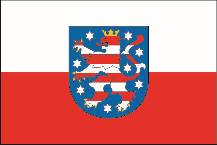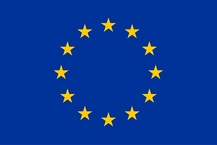Informationstechnik - Sicherheitsverfahren - Verschlüsselungsalgorithmen - Teil 2: Asymmetrische Chiffren Information technology - Security techniques - Encryption algorithms - Part 2: Asymmetric ciphers
Informationstechnik - Sicherheitsverfahren - Verschlüsselungsalgorithmen - Teil 2: Asymmetrische ChiffrenInformation technology - Security techniques - Encryption algorithms - Part 2: Asymmetric ciphers |
| Shortname | ISO/IEC 18033-2:2006-05 |
|---|---|
| Dokumentnummer | 18033-2 |
| Ausgabedatum | 2006-05-00 |
| Erwerb bei | https://www.vde-verlag.de/iec-normen/213871/iso-iec-18033-2-2006.html |
| Internationales Gremium | ISO/IEC JTC 1/SC 27 |
| Thema | Algorithmen , Sicherheitsverfahren , Verschlüsselung |
| Sektor | Informationstechnik und Telekommunikation |
| Branche | Informationstechnik |
| Level of Abstraction | 1 |
- Einführungsbeitrag (short) EN:
ISO/IEC 18033-2:2006 specifies encryption systems (ciphers) for the purpose of data confidentiality. The primary purpose of encryption (or encipherment) techniques is to protect the confidentiality of stored or transmitted data. An encryption algorithm is applied to data (often called plaintext or cleartext) to yield encrypted data (or ciphertext); this process is known as encryption. The encryption algorithm should be designed so that the ciphertext yields no information about the plaintext except, perhaps, its length. Associated with every encryption algorithm is a corresponding decryption algorithm, which transforms ciphertext back into its original plaintext. An asymmetric, i.e. public-key, encryption scheme allows a sender to use a recipient's public key to transmit an encryption of a message to the receiver, who can use his secret key to decrypt the given ciphertext, thereby obtaining the original message. Such a scheme should be secure in the sense that no information about the message should be leaked to a (resource-bounded) attacker, even if that attacker mounts a so-called 'chosen ciphertext' attack, in which he may obtain decryptions of other ciphertexts. This is the strongest type of attack that has been proposed for a public-key encryption scheme. ISO/IEC 18033-2:2006 specifies the functional interface of such a scheme, and in addition specifies a number of particular schemes that appear to be secure against chosen ciphertext attack. The different schemes offer different trade-offs between security properties and efficiency.
- Anmerkung:
Geändert durch ISO/IEC 18033-2 AMD 1 (2017-11)
- ISO/IEC 10118-2 (2000-12)
- ISO/IEC 10118-3 (2004-03)
- ISO/IEC 18033-3 (2005-07)
- ISO/IEC 9797-1 (1999-12)
- ISO/IEC 9797-2 (2002-06)
-

Thüringen Branche: Informationstechnik
Ergebnis 41Thüringer DatenschutzgesetzThürDSG
Einzelne Vorschriften
§§ 4; 16-19; 23; 25-30; 33-39; 48; 49; 52; 54; 57-60

Thüringen Branche: Informationstechnik
Ergebnis 42Allgemeine Richtlinie zur Nutzung des zentralen Internetzuganges, des Mailsystems und der zentralen IP-TK-Vermittlung des Corporate Network (CN) des FreistaatsThüringenIntzugIP-TKVermCNRichtl
Einzelne Vorschriften
Punkte 2; 4

Thüringen Branche: Informationstechnik
Ergebnis 43Richtlinie für Verkabelungen zum Aufbau von dienstneutralen Kommunikationsanlagen des Freistaates Thüringen - Verkabelungsrichtlinie 2010VerkblRichtl2010
Einzelne Vorschriften
Punkte 4; 5; 6

Transnational Branche: Informationstechnik
Ergebnis 44VERORDNUNG (EU) 2019/881 DES EUROPÄISCHEN PARLAMENTS UND DES RATES vom 17. April 2019 über die ENISA (Agentur der Europäischen Union für Cybersicherheit) und über die Zertifizierung der Cybersicherheit von Informations- und Kommunikationstechnik und zur Aufhebung der Verordnung (EU) Nr. 526/2013 (Rechtsakt zur Cybersicherheit)VO Nr. 881/2019 (EU) - EU Cybersecurity Act
Einzelne Vorschriften
Alle

Bundesrecht Branche: Informationstechnik
Ergebnis 45IT Sicherheitsgesetz 2.0IT SiG 2.0
Einzelne Vorschriften
Alle
